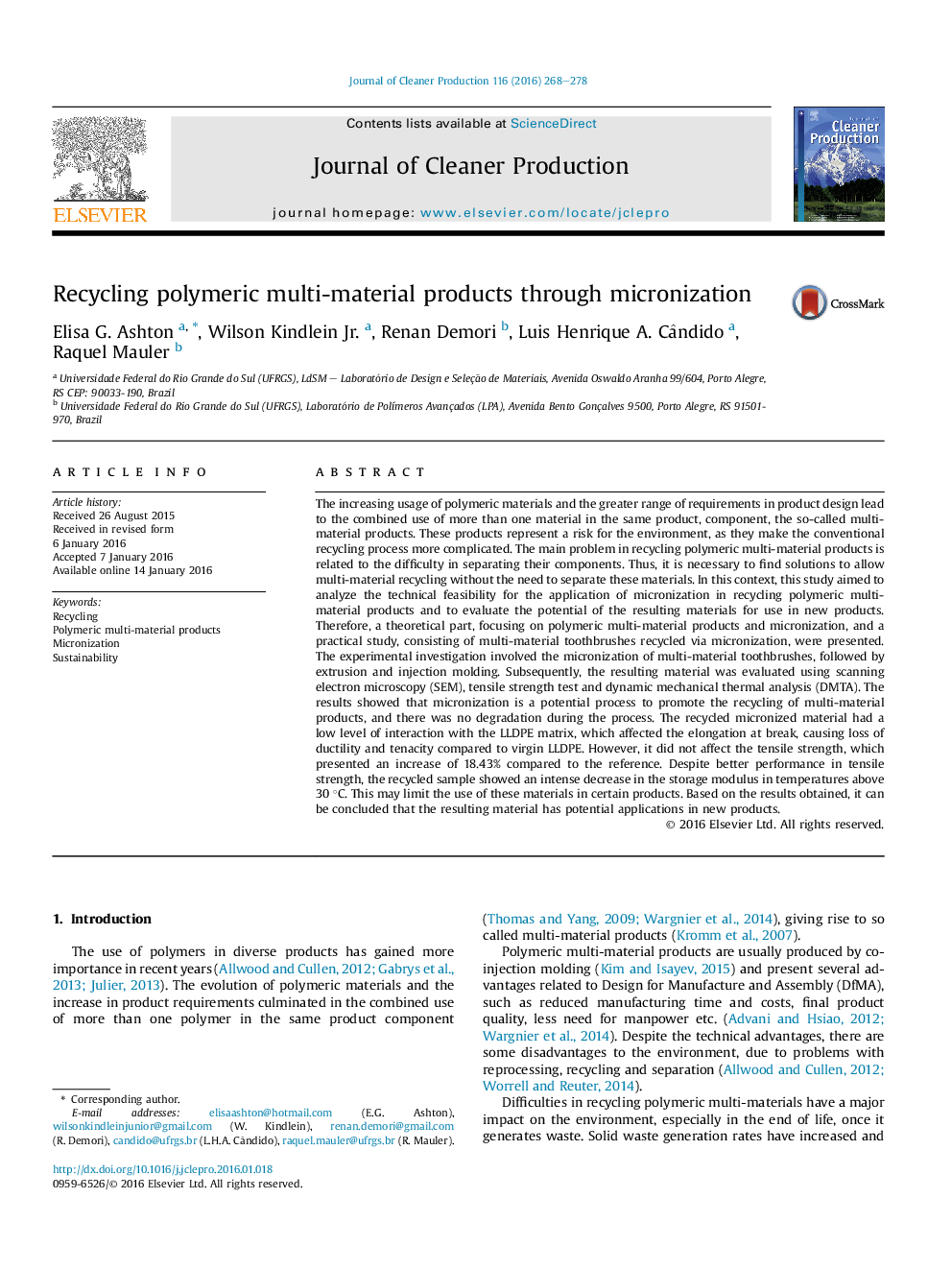| Article ID | Journal | Published Year | Pages | File Type |
|---|---|---|---|---|
| 1744206 | Journal of Cleaner Production | 2016 | 11 Pages |
•Micronization showed potential to promote recycling of multi-materials.•Applied extrusion and injection molding processes to recycled materials.•Evaluated the final material mechanical properties.•Showed that toothbrush recycled material may be applied to new products.
The increasing usage of polymeric materials and the greater range of requirements in product design lead to the combined use of more than one material in the same product, component, the so-called multi-material products. These products represent a risk for the environment, as they make the conventional recycling process more complicated. The main problem in recycling polymeric multi-material products is related to the difficulty in separating their components. Thus, it is necessary to find solutions to allow multi-material recycling without the need to separate these materials. In this context, this study aimed to analyze the technical feasibility for the application of micronization in recycling polymeric multi-material products and to evaluate the potential of the resulting materials for use in new products. Therefore, a theoretical part, focusing on polymeric multi-material products and micronization, and a practical study, consisting of multi-material toothbrushes recycled via micronization, were presented. The experimental investigation involved the micronization of multi-material toothbrushes, followed by extrusion and injection molding. Subsequently, the resulting material was evaluated using scanning electron microscopy (SEM), tensile strength test and dynamic mechanical thermal analysis (DMTA). The results showed that micronization is a potential process to promote the recycling of multi-material products, and there was no degradation during the process. The recycled micronized material had a low level of interaction with the LLDPE matrix, which affected the elongation at break, causing loss of ductility and tenacity compared to virgin LLDPE. However, it did not affect the tensile strength, which presented an increase of 18.43% compared to the reference. Despite better performance in tensile strength, the recycled sample showed an intense decrease in the storage modulus in temperatures above 30 °C. This may limit the use of these materials in certain products. Based on the results obtained, it can be concluded that the resulting material has potential applications in new products.
Graphical abstractFigure optionsDownload full-size imageDownload as PowerPoint slide
